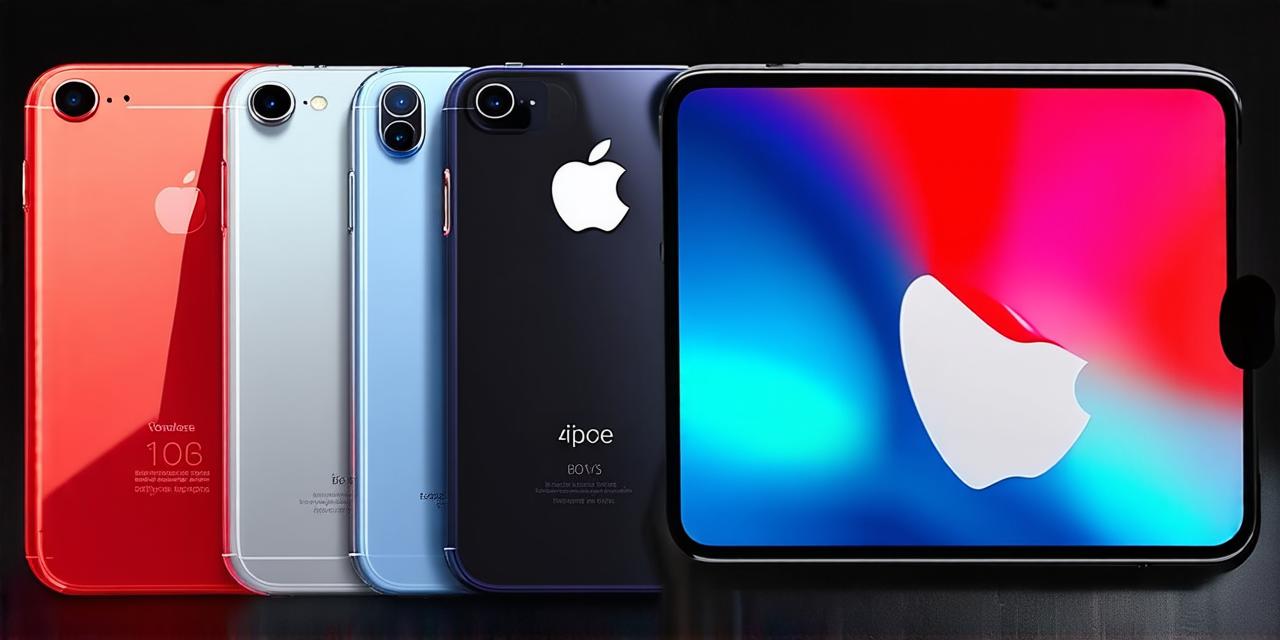Introduction
The rise of mobile devices has brought about a significant shift in how people interact with technology. The most popular operating system for smartphones and tablets is undoubtedly iOS, developed by Apple Inc. iOS powers billions of devices worldwide, making it an essential platform for developers to consider when building their applications.
What is iOS?
To understand what iOS is, it’s essential to define what an operating system (OS) is. An OS is a software program that manages computer hardware resources and provides common services for computer programs.
iOS is an operating system specifically designed for mobile devices such as smartphones and tablets. It was first introduced in 2007 with the launch of the iPhone and has since become the primary platform for Apple’s mobile devices. As of 2021, iOS 15, the latest version of the OS, powers over 1.8 billion devices worldwide.
One of the key features that sets iOS apart from other operating systems is its user-friendly interface and intuitive design. The OS also provides a range of features that are tailored specifically to mobile devices, such as touch-based interactions, push notifications, and location services.
The Importance of iOS for Developers
Given the widespread adoption of iOS devices, it’s clear that this operating system is crucial for developers looking to reach a broad audience. By building apps for iOS, developers can tap into the vast potential of Apple’s device ecosystem, which includes millions of users around the world.
There are several reasons why iOS is so important for developers:
- Large User Base: As mentioned earlier, iOS powers over 1.8 billion devices worldwide. This means that by building an app for this platform, developers can potentially reach a huge audience.
- Stable and Secure: iOS is known for its stability and security, making it a popular choice among users. This also makes it an attractive platform for developers who want to create apps that are reliable and less prone to crashes or security issues.
- Robust Ecosystem: Apple’s app ecosystem is one of the most robust and profitable in the world. The App Store, which is the primary platform for iOS app distribution, has millions of apps available, with developers earning billions of dollars in revenue each year.
- Seamless Integration: iOS integrates seamlessly with other Apple products and services, such as iCloud, Apple Pay, and Siri. This means that developers can easily leverage these features to enhance the user experience of their apps.

Case Studies: Success Stories with iOS Apps
To illustrate the importance of iOS for developers, let’s look at a few case studies of successful iOS apps:
- Uber: The ride-hailing app is one of the most popular and valuable startups in the world, valued at over $80 billion. Uber’s success can be attributed in part to its strong presence on iOS devices, where it first launched in 2010. The company has since expanded to other platforms, but iOS remains its primary focus.
- Instagram: The photo-sharing app is another example of a successful iOS app that has become an integral part of modern life. Launched in 2010, Instagram quickly gained popularity among users and has since been acquired by Facebook for $1 billion.
- Duolingo: The language learning app is a great example of how iOS can be used to create educational content that resonates with users. Duolingo’s app was launched on iOS in 2009 and has since become one of the most popular language learning apps in the world, with over 300 million users.
How iOS Works: An Inside Look at the OS
Now that we’ve established the importance of iOS for developers let’s take a closer look at how the operating system works.
Operating System Architecture
iOS is built on top of a microkernel architecture, which means that the core operating system services are isolated from the application code running on the device. This makes it easier to update and maintain the OS without affecting the applications that run on it.
Key Components of iOS
The key components of iOS include:
- Kernel: The kernel is responsible for managing the hardware resources of the device, such as the CPU, memory, and storage.
- User Interface (UI): The UI is what users interact with when they use an iOS device. It includes the home screen, icons, and other visual elements.
- Services: iOS provides a range of services that are used by applications, such as location services, push notifications, and iCloud.
- Frameworks: iOS includes a number of frameworks that provide developers with pre-built code for common tasks, such as networking, graphics, and media playback.
- APIs: The OS also provides a set of application programming interfaces (APIs) that allow developers to interact with the underlying system and other apps on the device.
